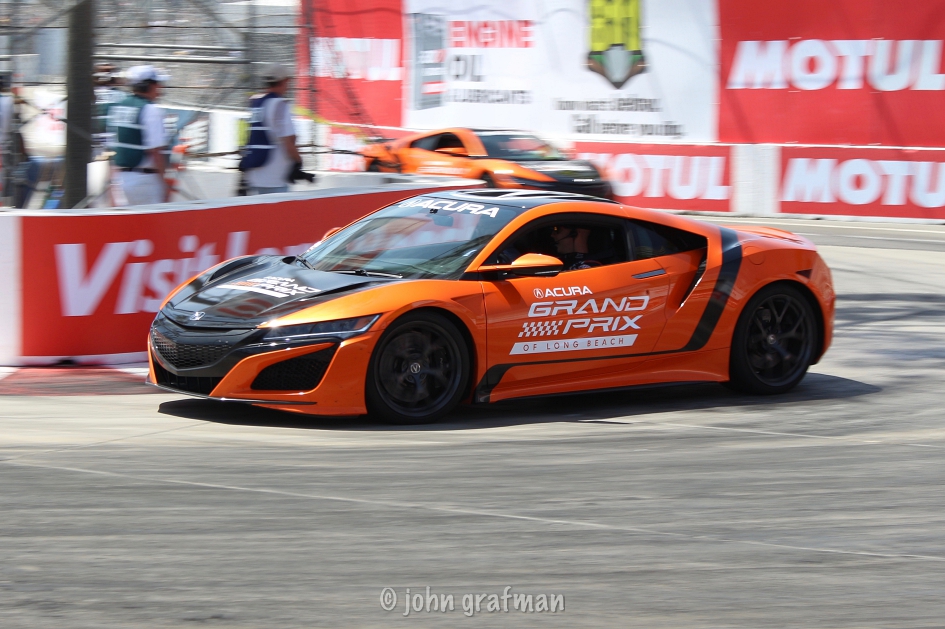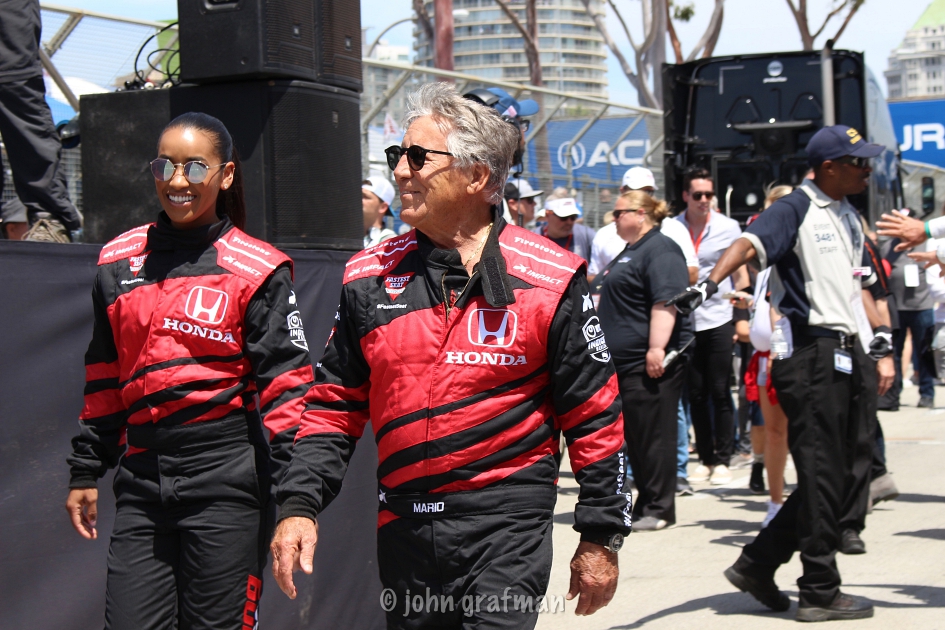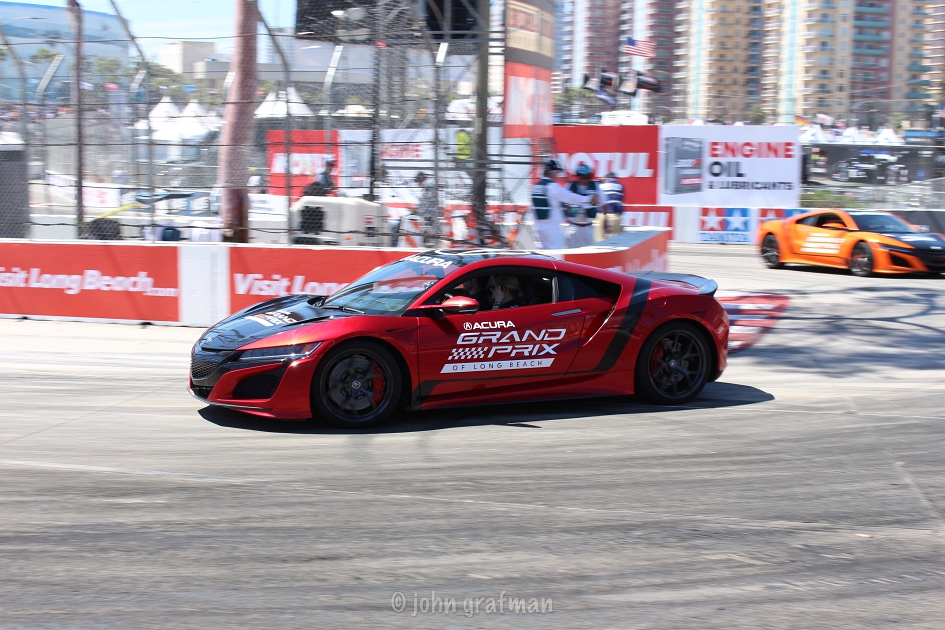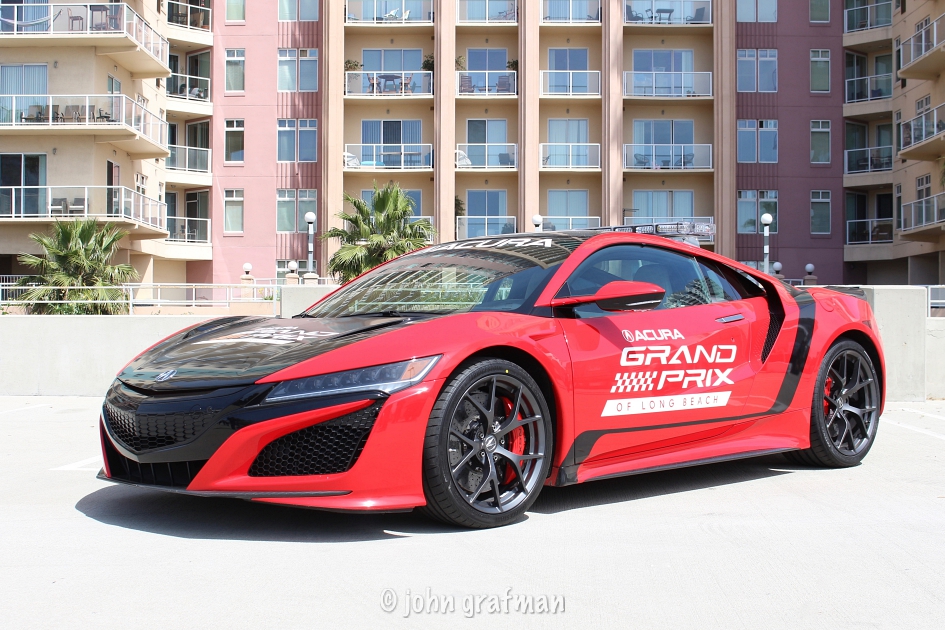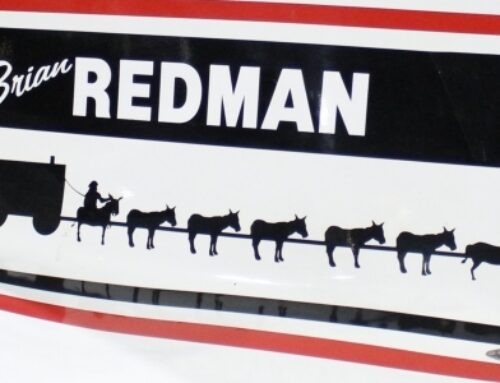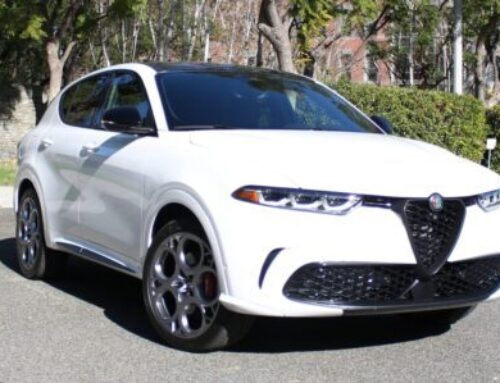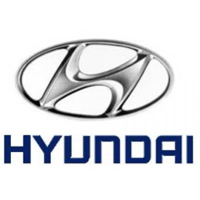After three-days of non-stop, racing action, we want more. And, we also want answers to a few questions, too. While racers might have one opinion on styling, design professionals come at this from a different angle. Fortunately, we have Dave Marek, Acura Executive Creative Director, on our side. Dave provides us with his insight as designer with a passion for motorsports, as well as Acura’s NSX. Often the OEMs state how the engineering from the track trickles its way down into street cars. So, we have to ask, “How does one distill and translate the thrill found in racing, like at the Acura Grand Prix of Long Beach, and infuse that into production car design?”
Article and images by John Grafman
Dave Marek says, “Well, Acura first and foremost is Precision Crafted Performance. Well, the performance part of it implies racing, right? So, I think that the visceral part of racing, you know, you’re around it, you feel the sensation of power and speed and just color. But, it’s also the most form follows function you can get for designing.”
“So, if you can get the car, the production cars, to feel authentic with that kind of proportion or feel or sound, then that’s why you’re doing it. You infuse it by stance, bigger wheel and tire is easy, meaner headlights. Whatever it is from a styling standpoint.”
“And then you do it from more of the cues that you have on like fender flares, pushing the body out, things like that. More emotional hood. So, for us, that’s what we do. Even the new RDX has the kind of performance feel and stance and kind of likeness. And then you back it up with the actual performance.”
If you really live up to tighter cabin, wheels at the corner out, and that proportion, then you’re halfway there for the design
“I think everybody says they do that, but if you really live up to tighter cabin, wheels at the corner out, and that proportion, then you’re halfway there for the design.”
Ok, now we have to get a little personal. Thankfully, Dave doesn’t mind. Looking forward, we ask Dave, “The drum beat of artificial intelligence and automated vehicles gets louder with each passing day. The progress of that technology and subsequently the influence on styling seems, by many, to go against the grain of racing and what it stands for. How do you feel about that?”
“I hate it [laughs]. No, sorry. No, here’s the thing, I think if you were to talk to millennials now, and you’ve divided into this pie of different versions of guys playing video games all the time, you talk to them and they’re doing a lot of it is racing.”
“And you think, you guys love this? And they’re like, ‘Yeah, man. We race with everybody.’ And in some way you think, well, that you don’t have to go to the track, because you’re doing it either through video gaming or whatever. But the bottom line is, they are still competitive and still looking at, ‘How do I beat that guy?'”
If I’m going to be driven, I want to be driven by somebody that’s amazing!
“So, I think that the AI and the automated car, to me, and I’ve said this in a lot of interviews, is if I’m going to be driven, I want to be driven by somebody that’s amazing! That’s just the way it is. So, if Senna drives me, if Mario Andretti drives me, whoever drives me to work, I think he should be great.”
“And in respect of my driving, which isn’t bad, but if you could have somebody drive you that’s a world champion, I think it would be great. So, to me, what does that do to the styling?
“I liken it to a rollercoaster. If you go on a rollercoaster ride, if you go to Magic Mountain … If you go to Disney, no offense to Disney, I love Disney, but they’re not as scary. If you go to Magic Mountain, you want to make sure you’re buckled in good! So, that’s kind of the influence on the styling. Sure, there’s going to be some mobile units that feel like a campfire, you know, everybody sits around it, or you do business on the way to work, or whatever.”
“But there’s also going to be the, ‘I still want the joyride thrill.’ You’re going to need to be in the car a little more securely. So, literally that will translate to seat design, and IT design, and what are you trying to get out of it. Are you literally watching TV or are you actually watching where you’re going and enjoying it? I think there’s room for it. I think the doom and gloom of a bunch of toasters is not actually true.”
Walking around the 1.96-mile course at the Acura Grand Prix of Long Beach, it’s obvious who’s a passionate race enthusiast and who’s mildly entertained by the sights and smells. Similarly, there are car buyers that are well aware of every nuance in each new model. And there are those that are basically ambivalent. The number of those that perceive the car as an appliance, speaking of toasters, feels like it’s growing. What is Honda and Acura design doing to reverse that trend?
Dave definitely has thought about this for some time, and says, “Yeah, that’s a really good question. I think that there is a trend to make sure my life is easier. Whether it’s a car, phone, whatever it is. But I think for us it’s, make sure that car does that.”
If you get in and you’re frustrated with it, that’s not going to work.
“So, if you get in the car, I mention the RDX again, that voice recognition and the system of using it, it’s doing what you want it to do. So, then you can start to really enjoy your vehicle. If you get in and you’re frustrated with it, that’s not going to work.”
“But if you get in it… then you start doing the fit and finish, and the real materials and things that people can show off. You know, it’s kind of like, I want to make sure that people are proud to get in and say, “Look at my car.” And I think that’s what we do. We try to do something that the user experience becomes much more of a part of their lifestyle. It’s not just my car, it’s actually part of me. It goes with me everywhere.”
“You just stay the course, not so much reverse the trend as keep doing what you really believe in for the car from a brand standpoint. And, I think people will resonate with that. And obviously resonate more, because I think at some point not everybody wants cookie cutter something. So, they’ll end up with deciding which one do I like better? And that’s where you win.
So, for us, I think it’s staying true to the brand, and making sure it’s performance and real materials, and kind of a more performance premium brand.”
As Dave mentions performance, we note that drivers like Hélio and point toward the NSX as being the nexus of racing and production car design. And, there are countless video games that feature sleek and sexy sports cars, yet several manufacturers are looking to the SUV as being the savior of sales. So, we inquire, “how does one adjust and compensate for what consumers find thrilling, like the NSX, and what they actually purchase?”
Marek quickly responds, “Well, first of all, they’re absolutely right [smiling]. The NSX is the nexus of racing. But, I think It’s funny, because why has the CUV become so prevalent? And it’s because it’s the usability. So, if you can have your cake and eat it too… The NSX is the halo for all the cars we’re doing. So, it’s there.”
What do you want the RDX to look like?” Well, I want it to look like an NSX!
“And you think, “Well, what do you want the RDX to look like?” Well, I want it to look like an NSX. I know that’s not realistic, but I certainly want it to feel like they’re the same family. Or there’s lots of cues from that from, you know, the wheel design to the surface development to the interior, the layout. Things like that. Dual, personal. All of that stuff goes into the CUVs.”
“So, the CU … It’s not necessarily that the CUV is less thrilling, but if you can give them a CUV that has all the attributes that you’re trying to do in the NSX, then you win. So, I think my role is to do that. How do we connect the NSX to that? And you can always judge for that.”
“If you’re looking at the interior and going, “Yeah, it’s not enough.” It needs to be more performance or more powerful or color ways, you know, to make it more shocking or contrast or things like that. So, you know, stitching … there’s a lot of things you can do to make it more performance-feeling.”
“So, I think that the CUV, it’s not going to go away. Because it’s so easy to use. And if you can get the, you know, the MDX, the current MDX, you know, we took it to Nürburgring, It’s like the best handling CUV. And people think, “Why would you care?” But you do.
I think that ultimately, the answer to your question is that as people keep going towards CUVs, you’ve seen it, they’re getting more car-like. You can call them crossovers, they literally are. I think that that’s the brand. The brand should attack whatever segment they’re in with what they’re true to. So, the NSX is our halo. So, be true to that.”
The brand should attack whatever segment they’re in with what they’re true to.
We are in agreement that race cars are fantastical, dressed in imaginative functional body work and blindingly colorful paint schemes. Various combinations help to identify each team and connect with fans. Which is, in part, lends a hand in brand loyalty.
Along those lines, Acura’s introducing the 2020 Acura TLX PMC Edition, which is the Performance Manufacturing Center. Naturally, we wonder, is PMC the potential gateway to further specialty modifications from the factory and maybe offering a new market for the aging sophisticated import tuner market?
“My real answer is I can’t speak about future product,” says Dave Marek, “but that would be a really good idea. I think, yeah … you know, that PMC edition, you think, “Well, if I could have my car painted at the NSX factory,” and what else can you do there? You know, they’re assembling it there, that kind of stuff. I think it’s doable to have some kind of long-term plan for that.”
“And, I think at this point there’s not a plan for that. There are plans, but it’s, you know, do the TLX and do the MDX. But, I do think that there’s potential for us, whether it’s PMC or somewhere else, to bolster that market. I mean, that’s our bread and butter anyway. And I think that in the long run, that if we can figure out ways to not get so complicated that there’s a lot of stuff going on, but make it customizable or able for people to realize the immediacy and the customization of what their car has. Without saying yes, we’re going to do that. I don’t know that we’re going to do that.”


